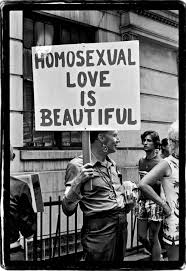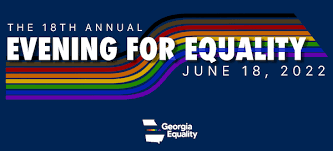Title: Celebrating Love and Identity: Understanding Lesbianism
Introduction:
Lesbianism, a term used to describe women who are emotionally, romantically, and sexually attracted to other women, is an integral part of the diverse tapestry that makes up human sexuality. As society evolves and becomes more accepting, it is crucial to celebrate and understand the experiences of lesbian individuals. In this article, we will explore the essence of lesbianism, debunk common myths, highlight the challenges faced by lesbians, and emphasize the importance of inclusivity and acceptance.
Defining Lesbianism:
Lesbianism is not simply a sexual preference; it encompasses emotional connections and romantic relationships between women. It is essential to recognize that sexual orientation is a deeply personal aspect of one’s identity. Lesbians form loving partnerships based on mutual respect, shared values, and emotional intimacy.
Debunking Myths:
Unfortunately, misconceptions about lesbianism persist in many societies. One common myth suggests that being a lesbian is a choice or can be “cured.” However, scientific research has consistently shown that sexual orientation is not a matter of choice but rather an inherent aspect of an individual’s identity. Lesbian women should be affirmed and supported in their journey towards self-acceptance.
Challenges Faced by Lesbians:
Despite significant progress in LGBTQ+ rights over the years, lesbians continue to face unique challenges. Discrimination, prejudice, and social stigma can impact various aspects of their lives. From employment discrimination to limited access to healthcare services tailored for their needs, lesbians often navigate a world that does not always fully acknowledge or support their identities.
Inclusivity and Acceptance:
Creating an inclusive society requires embracing diversity in all its forms. Recognizing and celebrating lesbian individuals’ contributions fosters an environment where everyone can thrive without fear or discrimination. It involves challenging harmful stereotypes while actively promoting acceptance through education and advocacy efforts.
Supporting Lesbian Communities:
Supporting lesbian communities is crucial in creating a more inclusive society. Allies can play a vital role by amplifying lesbian voices, advocating for equal rights and protections, and challenging discriminatory practices. By actively engaging in dialogue and promoting understanding, we can foster an environment where lesbians feel seen, heard, and valued.
Conclusion:
Understanding lesbianism is an essential step towards creating a more inclusive world. By debunking myths, acknowledging the challenges faced by lesbians, and promoting acceptance, we can contribute to a society where love and identity are celebrated in all their forms. Let us continue to work together to ensure that lesbian individuals feel empowered, respected, and embraced for who they are.
Frequently Asked Questions About Lesbians: Answers to Your Inquiries
- What is a lesbian?
- How do lesbians have sex?
- How do you know if you’re a lesbian?
- How can I meet other lesbians?
- Are there any health risks associated with being a lesbian?
- What rights do lesbians have in the United States?
What is a lesbian?
A lesbian is a woman who is emotionally, romantically, and sexually attracted to other women. Lesbianism is a sexual orientation that forms part of the diverse spectrum of human sexuality. It is important to note that sexual orientation is an inherent aspect of an individual’s identity and not a choice. Lesbians form loving relationships based on mutual respect, emotional connection, and shared values. Like any other sexual orientation, being a lesbian is a normal and valid expression of human diversity.
How do lesbians have sex?
Sexual experiences and practices vary greatly among individuals, regardless of their sexual orientation. It is important to approach this topic with sensitivity and respect for personal boundaries.
Lesbians engage in a wide range of sexual activities that can involve emotional intimacy, physical pleasure, and connection. These activities may include but are not limited to:
- Emotional Intimacy: Building emotional connections is a fundamental aspect of any relationship, including lesbian relationships. This can involve deep conversations, sharing experiences, and providing support.
- Kissing: Like any romantic relationship, kissing is a common expression of affection and desire between two people.
- Cuddling and Caressing: Physical touch such as cuddling or caressing can create feelings of comfort, intimacy, and pleasure.
- Oral Sex: Many lesbians engage in oral sex as a way to provide pleasure to their partner through stimulation of the genitals using the mouth or tongue.
- Manual Stimulation: Fingering or manual stimulation involves using fingers or hands to stimulate the genitals for pleasure.
- Mutual Masturbation: This involves engaging in self-stimulation while being physically present with one’s partner, allowing for shared intimacy and exploration.
- Use of Sex Toys: Some lesbians incorporate sex toys into their sexual experiences for added pleasure and variety.
It’s important to remember that sexual preferences and practices are highly personal and can vary greatly among individuals based on their comfort levels, desires, and boundaries. Communication, consent, respect for boundaries, and mutual pleasure are key elements in any consensual sexual activity between partners.
It is also worth noting that not all lesbians engage in every type of sexual activity mentioned above; personal preferences may differ from person to person. It’s crucial to prioritize open communication with your partner(s) to ensure mutual understanding and consent regarding desires, boundaries, and preferences when it comes to sexual experiences.
How do you know if you’re a lesbian?
Discovering and understanding one’s sexual orientation, including if you identify as a lesbian, is a deeply personal journey. While I can provide some general guidance, it is important to remember that everyone’s experiences are unique. Here are a few aspects to consider when exploring your sexual orientation:
- Self-reflection: Take time to reflect on your feelings and attractions towards others. Are you primarily or exclusively attracted to women emotionally, romantically, and sexually? Recognize that sexual orientation is not solely based on physical attraction but also includes emotional and romantic connections.
- Exploration: Engage in self-exploration by learning about different sexual orientations, including lesbianism. Read books, articles, or personal accounts from the LGBTQ+ community to gain insights and perspectives that may resonate with your own experiences.
- Emotional connections: Pay attention to the types of relationships and connections you form with others. Do you find yourself consistently developing strong emotional bonds with women? Consider how these connections differ from those you have with individuals of other genders.
- Attraction patterns: Reflect on your past and present attractions. Have you found yourself predominantly attracted to women throughout your life? Identifying recurring patterns can provide clarity about your sexual orientation.
- Personal acceptance: Accepting oneself is an essential part of the process. Understand that discovering your sexual orientation is valid and natural. Give yourself permission to explore without judgment or pressure.
- Seek support: Connecting with trusted friends, family members, or LGBTQ+ support groups can be beneficial during this self-discovery process. Engaging in conversations with individuals who have similar experiences can provide valuable insights and emotional support.
Remember, there is no rush or deadline for understanding one’s sexual orientation fully. It is a journey of self-discovery that may take time and introspection. If you feel overwhelmed or uncertain about your feelings, consider reaching out to professionals such as therapists or counselors who specialize in LGBTQ+ issues for guidance and support.
How can I meet other lesbians?
Meeting other lesbians can be an exciting and fulfilling experience. Here are a few suggestions to help you connect with the lesbian community:
- LGBTQ+ Events and Gatherings: Attend local LGBTQ+ events, such as pride parades, festivals, or community gatherings. These events provide a welcoming space to meet and connect with other lesbians.
- Join LGBTQ+ Organizations: Get involved in LGBTQ+ organizations or community centers in your area. They often host social events, support groups, or workshops specifically for lesbians. This can be a great way to meet like-minded individuals.
- Online Dating and Apps: Utilize dating websites and apps that cater specifically to the LGBTQ+ community. These platforms offer the opportunity to connect with other lesbians who are also looking for companionship or relationships.
- Social Media Groups: Join online lesbian communities on social media platforms such as Facebook or Instagram. These groups provide a virtual space for sharing experiences, making friends, and potentially meeting people in your area.
- Support Groups: Seek out local support groups or discussion forums focused on lesbian issues or coming out experiences. These spaces not only offer support but also provide opportunities to meet others who may share similar interests and experiences.
- Volunteer Opportunities: Engage in volunteer work for LGBTQ+ causes or organizations that resonate with you. This allows you to contribute positively to the community while also meeting fellow activists and like-minded individuals.
- Networking Through Friends: Let your friends know that you are interested in meeting other lesbians; they may have connections within the community or know someone who can introduce you to new people.
Remember, meeting new people takes time and patience, so don’t be discouraged if it doesn’t happen immediately. Be open-minded, approachable, and respectful when interacting with others, allowing genuine connections to develop naturally over time.
Are there any health risks associated with being a lesbian?
No, being a lesbian does not inherently pose any health risks. Sexual orientation itself does not determine an individual’s health status. However, it is important to note that everyone, regardless of sexual orientation, should prioritize their overall health and well-being.
Like anyone else, lesbians should engage in regular healthcare practices such as routine check-ups, screenings, and preventive care. This includes maintaining a healthy lifestyle through proper nutrition, exercise, and managing stress. Additionally, it is crucial for all individuals to practice safe sex and undergo regular screenings for sexually transmitted infections (STIs) if sexually active.
Lesbians may also face specific health concerns that are important to address. For example:
- Mental Health: Lesbians may experience higher rates of mental health issues such as depression or anxiety due to societal discrimination or stigma. Access to affirming mental healthcare is essential in supporting their well-being.
- Breast Cancer: While being a lesbian does not increase the risk of breast cancer itself, lesbians may face barriers in accessing appropriate breast cancer screenings or information due to various factors including healthcare disparities or lack of cultural competency among healthcare providers.
- Reproductive Health: Lesbians who wish to have children may require assistance from fertility services or reproductive technologies. It’s important for them to consult with healthcare professionals who are knowledgeable and supportive of their unique needs.
It is crucial for lesbians and individuals of all sexual orientations to have open and honest communication with their healthcare providers about their specific needs and concerns. This allows for personalized care that addresses both general health considerations and any unique aspects related to sexual orientation or gender identity.
What rights do lesbians have in the United States?
Lesbians in the United States possess a range of legal rights and protections, although these rights can vary depending on the state and local laws. Here are some key rights that apply to lesbians:
- Marriage Equality: Since the landmark Supreme Court ruling in 2015 (Obergefell v. Hodges), same-sex marriage is legal nationwide. This means that lesbian couples have the right to marry and enjoy the same legal benefits and protections as heterosexual couples.
- Employment Non-Discrimination: Many states and cities have laws or ordinances that prohibit discrimination based on sexual orientation, including in employment. This means that lesbians cannot be discriminated against or fired solely because of their sexual orientation.
- Housing Rights: Several jurisdictions have laws protecting individuals from housing discrimination based on sexual orientation, ensuring that lesbians have equal access to housing opportunities without facing discrimination.
- Adoption and Parenting Rights: Lesbians have the right to adopt children, either individually or as a couple, in all states. Additionally, they can pursue assisted reproductive technologies such as artificial insemination or in vitro fertilization to build their families.
- Protection from Hate Crimes: Federal law includes sexual orientation as a protected category under hate crime legislation, providing legal recourse for victims of bias-motivated violence or harassment.
- Health Care Rights: Under the Affordable Care Act (ACA), discrimination based on sexual orientation is prohibited in healthcare settings receiving federal funding. This ensures that lesbians have equal access to healthcare services without facing discrimination.
- Military Service: Since 2011, openly lesbian individuals can serve openly in all branches of the U.S. military following the repeal of “Don’t Ask, Don’t Tell” policy.
It’s important to note that while significant progress has been made in securing rights for lesbians, challenges and disparities still exist across different regions of the country. It is advisable to consult local laws and seek legal advice for specific information regarding rights and protections in a particular state or locality.





Leave a Reply